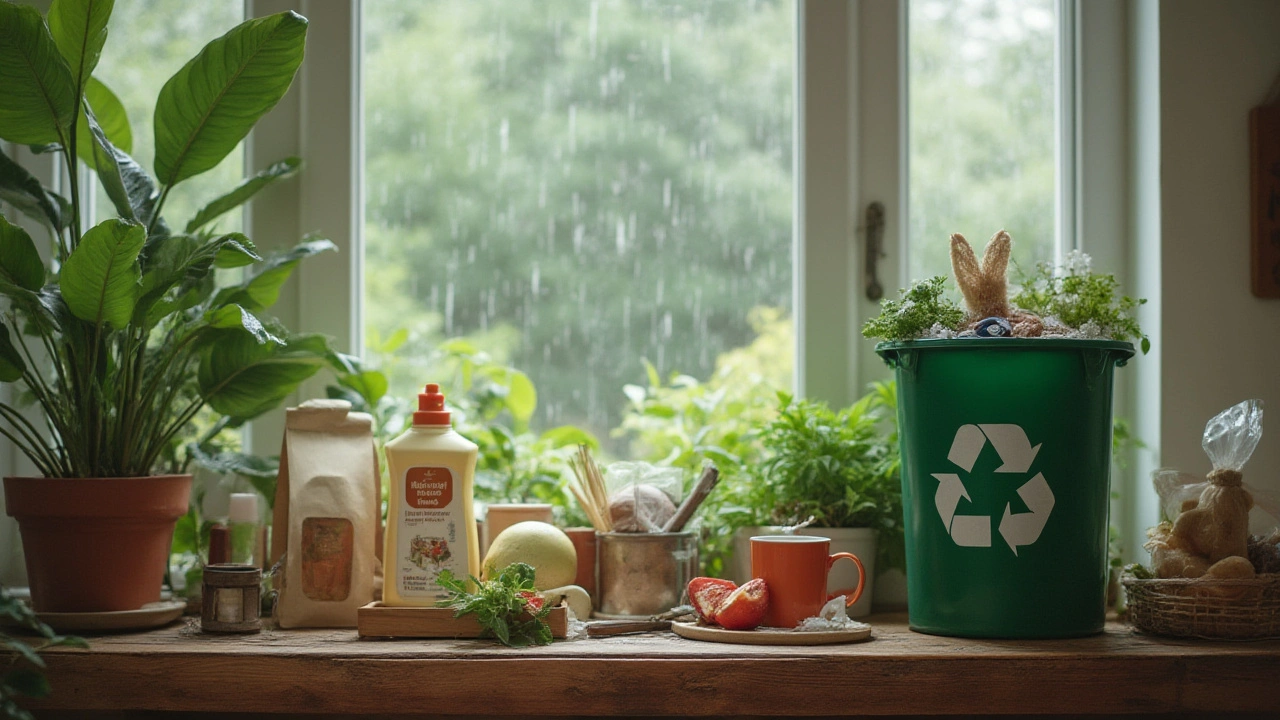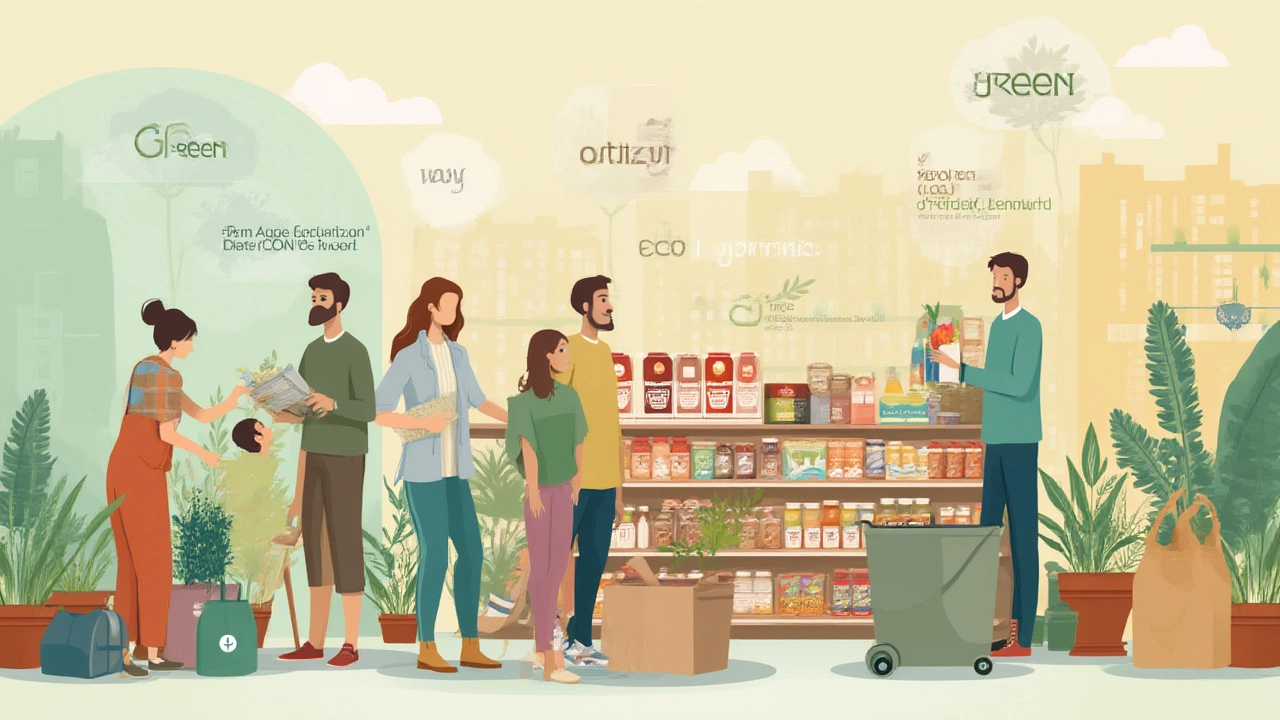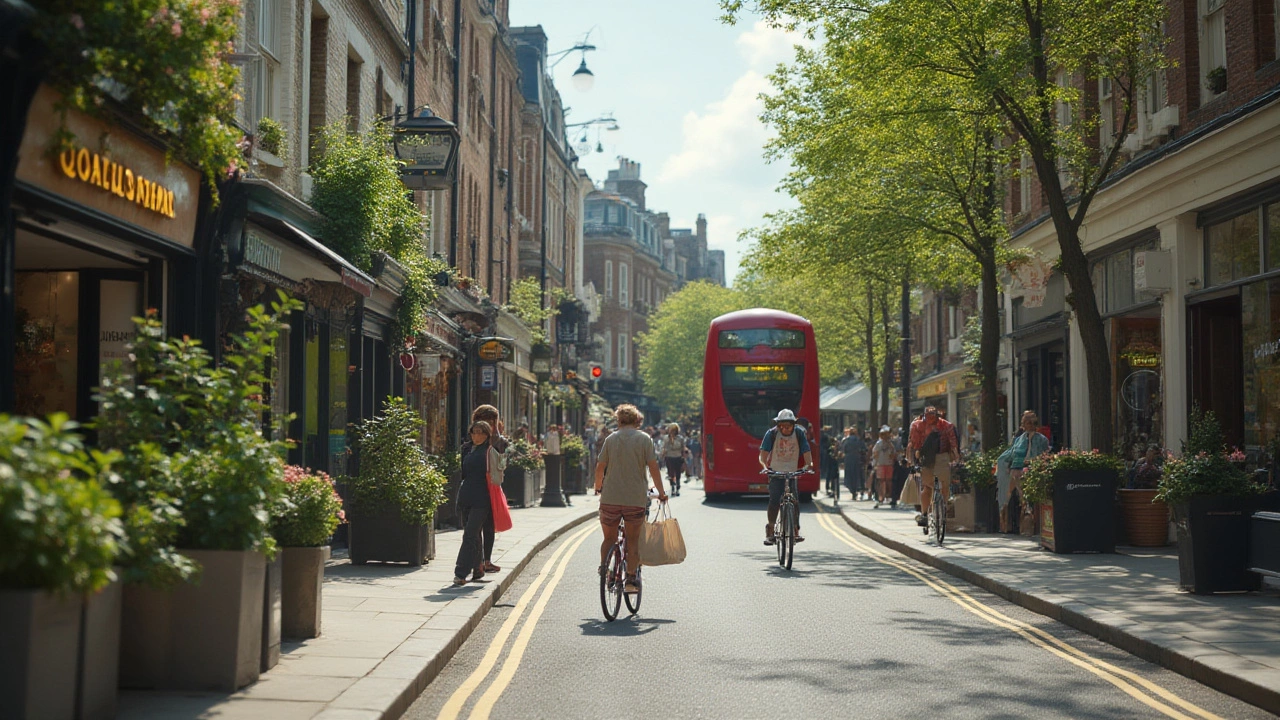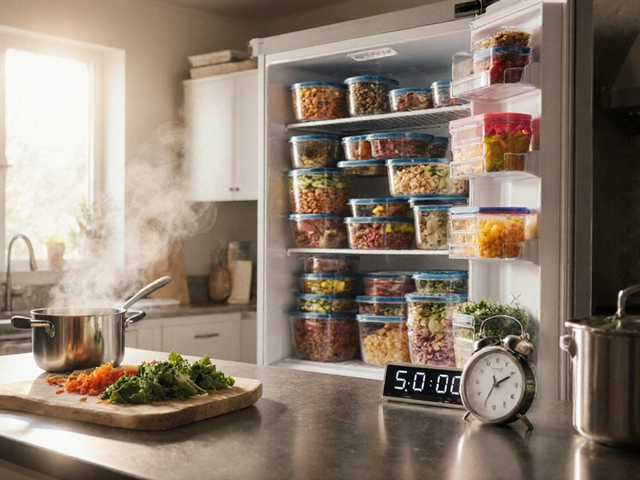It’s hard to scroll through a feed or visit a shop without seeing “green” or “eco-friendly” plastered on packaging. These words pop up everywhere but, honestly, do most of us really know what separates them? My neighbour once said buying a ‘green’ detergent meant she was ‘saving the planet.’ Yet, last week, my friend swore only products marked ‘eco-friendly’ truly help nature. All this talk gets confusing — and, trust me, it’s not just you.
Why Do People Mix Up Green and Eco-Friendly?
Here’s the bottom line: marketers love buzzwords. Brands use “green” and “eco-friendly” because we crave easy solutions to big problems. Both terms suggest we’re doing the right thing just by picking a certain soap or bag. But the truth is, companies often use these words without clear definitions. That’s what leads Whiskers (my cat) to sleep in the greenest-looking cardboard box, while I’m left scratching my head in the cleaning aisle.
Let’s break it down further:
- “Green” can mean almost anything that mildly benefits the planet, even just a tweak to packaging.
- “Eco-friendly” hints at a product or choice being kind or less harmful to nature as a whole — the air, water, ecosystems, and living things.
Research from the Australian Competition and Consumer Commission in 2024 found that nearly 40% of people can’t tell the difference. This confusion gets amplified by vague product claims, like a shirt called “green” just for its color or a spray bottle labeled “eco-friendly” because it’s slightly easier to recycle.
Companies are aware of this fuzziness, and that’s why greenwashing — when something looks environmentally friendly but isn’t really — thrives. Think about those disposable coffee cups pretending to be green because of a leafy logo. If you’re like me, you probably wonder: shouldn’t someone make rules? Australia’s laws on environmental claims try, but there’s still a lot of wiggle room, especially compared to Europe.
So, for now, if you feel lost, you’re not alone. The lines are truly blurry, both for everyday shoppers and for businesses trying to make their mark.
What Does “Green” Actually Mean?
Saying something is “green” is a bit like calling yourself healthy after one salad. Technically, anything labeled green suggests it’s better — just a little — for the environment. But there’s no rulebook. A food company might say it’s “green” because it sources some ingredients locally, but still uses heaps of single-use plastics. Car manufacturers declare models “green” if they offer slightly higher fuel efficiency, without touching how the vehicle is built or what powers it.
The lack of a legal definition means almost anything can sneak into this category. Green can reference:
- Energy: “Green energy” could be part solar, part fossil-fuel, as long as the balance tips slightly away from traditional coal or gas.
- Materials: A “green” product might have a smidge of recycled content — say, a yoga mat with 5% recycled rubber.
- Methods: Sometimes companies reduce water use by 2% and declare this “going green.”
But here’s a tricky bit — “green” doesn’t always factor in hidden impacts. That “green” face cream? It might use raw ingredients shipped across continents, boosted by lots of fossil fuels, just to land on your shelf.
The term can feel comforting, but real-world “green” choices can be shallow. According to the 2025 National Green Claims Survey, 53% of items marked ‘green’ in Australian supermarkets weren’t meaningfully better for the environment than regular products. The focus is often more about image than substance.
So, if you see “green” slapped on something, don’t take it at face value. Ask what’s actually different. Sometimes it’s just clever packaging with no deep change behind it.

How Does “Eco-Friendly” Stand Out?
Eco-friendly isn’t just a feel-good label. It’s supposed to signal something that causes less harm or maybe a net benefit to the natural world. The key here is a broader look at impact — everything from energy use and pollution to resource conservation and wildlife.
“Eco-friendly” usually covers:
- Production: Are materials renewable? Does manufacturing create big emissions or tons of waste?
- Use: Does it pollute when you use it? (Like low-VOC paints that don’t gas out chemicals at home.)
- End-of-life: Can the item be reused, composted, or recycled? Or will it live forever in a dump?
In Australia, more brands are getting tough on what “eco-friendly” means, especially in beauty, cleaning, and packaging. For instance, in 2025, Woolworths announced its own “eco-friendly” home brand products had to pass a third-party audit — so you get less toxic cleaning sprays, and packaging you can chuck in the compost bin.
These choices often cost a little more or take a bit more effort (think carrying your own keep cup around the city). But there’s payoff: real eco-friendliness supports healthier rivers, less landfill, and even better air. I like that my “eco” laundry powder keeps my local creek cleaner, even if Whiskers seems immune to the smell of “natural lavender.”
But watch for fakes, too. Some brands twist “eco-friendly” by changing a tiny part of their process and making bold claims. The scorecard? Look for official eco-labels — like the Blue Angel (Germany), GreenTick (Australia), or EU Ecolabel — which usually mean a product’s been checked properly.
Here’s a quick chart with red flags and real signs when it comes to “eco-friendly”:
| Red Flag (Misleading) | Green Light (Legit) |
|---|---|
| No certification; just the word “eco” printed | Recognised third-party labels |
| Vague promises (like “100% green” with no details) | Clear breakdown of ingredients and process |
| Only 1 feature changed (like “now recyclable!” but nothing else improved) | Full life cycle explained (from production to disposal) |
That’s why “eco-friendly” has more weight than “green” — at least, if you see details and proof backing up the promise.
Examples: Green Is Not Always Eco-Friendly (and Vice Versa)
Let me tell you, not everything that’s called green is actually friendly to the planet. And sometimes, things are truly eco-friendly without being hyped as “green.” Here are a few real-world moments I’ve tripped over in Melbourne (and, yes, sometimes with a curious cat sniffing at the result):
- Reusable Shopping Bags: Most supermarkets call their thicker plastic bags “green” because you can reuse them. But real eco-friendliness? That’s a cloth bag made from all-natural fibers like hemp or organic cotton, which breaks down easily at the end of its life and took less water to make.
- “Green” Cleaning Sprays: Saw one in a shop with a leaf logo, but with ammonia as a key ingredient. A real eco-friendly alternative is either a certified product or a homemade mix of vinegar and bicarb soda — safe for pets and waterways.
- Hybrid Cars: Heaps are branded green because they use less petrol, but some have batteries full of rare metals mined in damaging ways. An eco-friendly transport choice might be biking, walking, or car-sharing — slashing both resource use and pollution, without hidden harm.
- Compostable Coffee Cups: The “green” cup at the trendy café is only compostable in an industrial facility (available at just a few sites). A real eco-friendly move? Bringing your own mug, which piles up less waste everywhere.
- Bamboo Toothbrushes: Shops highlight them as “green” because bamboo isn’t plastic. Eco-friendliness comes from brands that use only sustainably harvested bamboo and natural bristles (instead of nylon), plus packaging that really is home-compostable.
The deeper you go, the clearer it gets — “green” is often the first stop, but not always the destination. Want to know if something’s both green and eco-friendly? Double-check for life-cycle details, certification badges, and no sneaky trade-offs under the surface.

Tips to Spot Real Sustainable Choices and Avoid Being Tricked
Let’s rip away the confusion. Here’s a quick toolkit to help you tell the difference and avoid those pesky greenwashing traps — no PhD in environmental science needed.
- Certifications Matter: When picking eco-friendly products, look for labels from groups like GreenTick, Australian Certified Organic, or EU Ecolabel — they’re much harder to fake.
- Read the Fine Print: Does the pack break down what’s really different? Are the claims about “renewable sources” or “non-toxic” explained somewhere?
- Check End-of-Life Plans: Ask if the thing will rot in your compost, disintegrate in the recycling stream, or just live in landfill for decades.
- Trace the Journey: Where was the product made? Was it flown from halfway around the world or made locally? Local is usually less wasteful.
- Less Packaging, More Impact: Eco-friendly picks usually skip the layers of plastic. If it comes wrapped in natural fibers or something you can reuse, big tick.
- Don’t Fall for Looks: If it’s just a flash of green color or a logo with a leaf, dig deeper. One study in 2024 found packaging claims alone steer two out of three shoppers, even when the product lags behind.
- Tech Tools: Free apps (like “Good on You” or “Ecostore”) in Australia let you scan products and see if they walk the walk. Use your phone to double-check at the shelf.
- Trust the Proof, Not the Promise: If a seller gets excited but shrugs off your questions (“It’s just better, trust us!”), that’s a sign to walk away.
And here’s a handy table, based on 2025 data for Aussie households, that shows how common greenwashing still is versus true eco-friendly certifications:
| Category | “Green” claims (unverified) | Certified Eco-Friendly |
|---|---|---|
| Cleaning Products | 67% | 14% |
| Personal Care | 58% | 16% |
| Home Goods | 53% | 20% |
If you want to lower your footprint, stick with brands that tell the hard truths, list their ingredients, and welcome your questions. When in doubt, choose simpler, local options with less stuff and longer life. That’s how you sidestep marketing mess and make choices that actually shift things for our patch of planet — all with Whiskers’ approving purr in the background.





